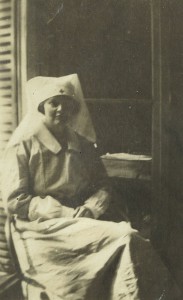
61 Bowdoin Street, Boston, Sunday, 12 February 1865: Tomorrow Huntington Wolcott[2] goes off, as Lieutenant, to join his regiment, and enter on his new career. He is only 19, and leaves an indulgent and affluent home, a life of the most sheltered & cultivated refinement, for the rude privations of camp life. God protect him, the brave lad, morally and bodily.
He is but 8 or 9 months older than my Frank;[3] how thankful I felt when the war broke out nearly 4 years ago that my boys were all too young to go – but now, it lingers on so wearily & yet so necessarily, that I often think I may yet have to send my treasures in faith & trust as so many brave hearted mothers have done ere now. Dr. Gray however says Frank’s college course must be finished first – then will be time enough for him to think of the army if needed – now, he has not the physique for it either – and is only 18 last fall too. Continue reading ‘The flower of our manhood’




